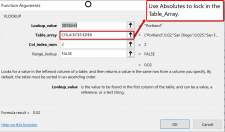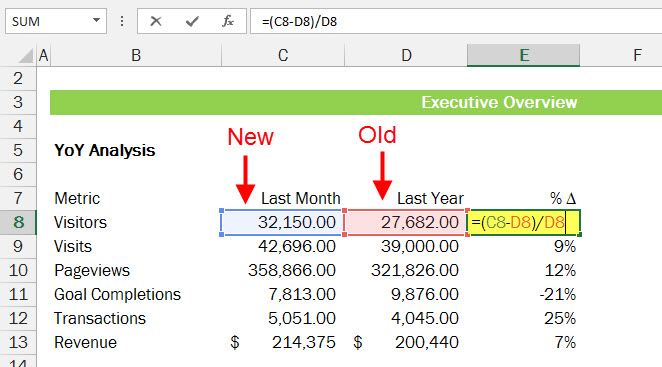



Only complete the following steps if you are using a Mac.If you are using Excel for Windows, please continue with the “Table Tools Design Tab” section below these alternate steps.
#Calculate salary increase in excel for mac for mac#
These are the alternate steps for Mac Users Only. Close the Queries & Connections dialogue box. If you did not click cell A5, then select the cell now. In the above steps A5 was already selected when we started the import, so Excel will indicate we want the information to import and display starting at cell =$A$5. In the “ Where do you want to put the data?” section choose Existing worksheet:ġ0. At the bottom of the Navigator dialogue box, select Load to expand the menu and choose Load To…ĩ. Select the CH5 CSV File listed in the Display Options pane.Ĩ. From the Get Data menu, choose From File, then From Workbook.įigure 5.3 Get Data From File, From Workbookĥ. The alternate steps can be found below after Step 11.Ĥ. You will set up this data using alternate steps. Mac Users: Excel for Mac does not have the tool for “Getting Data” from an Excel Workbook. In the EmployeeData sheet, click on cell A5. Open data file CH 5 Data and save the file as CH5 HR Report.Ģ. Note you will need to save the CH 5 HR file on your computer as you will import this file into the CH 5 Data file in the below steps.ġ. Demonstrate tabling skills by examining employee relations, payroll, and benefits.

Keeping the above table guidelines in mind, import human resource data into Excel, as a table. We will import the Excel file into our CH 5 Data file, turn the data into a table for further analysis. The data downloaded from the database is stored in an Excel workbook, however, it’s in a Comma Separated Values (CSV) format. In our example, we will work with an Excel file that has imported data from a human resources database. Databases vary drastically, therefore in some cases, it is necessary to import data types into Excel. In industry, data is commonly stored in databases or multiple Excel files. When graphing and charting table data you will also see Excel automatically adjusts of associated charts and ranges based on what the user is sorting or filtering at the time. You will also notice Excel treats formulas and calculations differently in a table, showing structured column names, along with automatically filling a calculated field to the entire table or offering quick and easy table totaling tools. Excel will also automatically expand the table to accommodate new data entries and allows for automatic formatting, such as recoloring of banded rows or columns. For example, using integrated filters and sort functions you can effortlessly drill down data based on questions and in return get results. There are several advantages of Excel treating the data independently. Excel treats the table area as a database locking the record entries together. Below are guidelines to consider when designing and building a table from scratch:Įxcel tables behave independently from the rest of the information on the worksheet. Structuring and planning table layouts are vital for data integrity. Turning a range of cells into an Excel table makes related data easier to analyze, visualize, and report. In this chapter, we will import data, and demonstrate tabling skills by examining employee relations, payroll, benefits, and training options. Organizing, maintaining, analyzing, and reporting human resources data is essentials across industries.


 0 kommentar(er)
0 kommentar(er)
